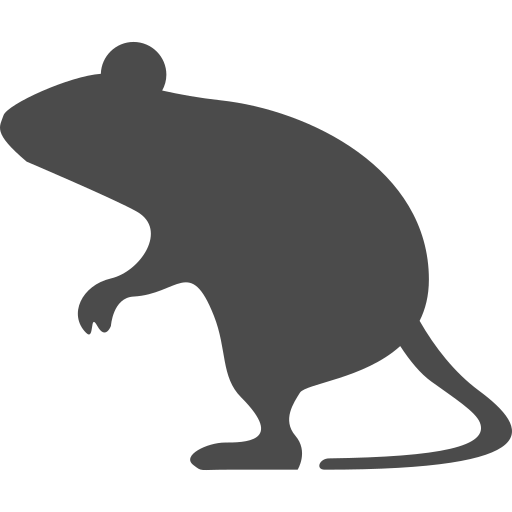Research

The development of modern life sciences would not have been possible without mice. As the most widely used mammalian model organism, mouse research has driven major breakthroughs in biology through tools like gene editing, optogenetics, electrophysiology, and advanced imaging techniques.
Our laboratory focuses on identifying the smallest molecular and neural units responsible for the sleep–wake cycle in mice. By comparing these components across species, we aim to define evolutionarily conserved minimal circuits and mechanisms that underlie sleep regulation.
Keywords: synaptic plasticity, gene editing, electrophysiology, optogenetics, epigenetics

Modern life science—once centered almost exclusively on mouse models—has reached a turning point. As of 2023, many of the powerful tools once limited to mice can now be applied to a wide range of organisms. Following Krogh’s Principle—“For such a large number of problems, there will be some animal of choice…“—we now have the freedom to choose species best suited to the questions we ask.
Our lab leverages social insects, particularly ants, as a model to study how genetically homogeneous individuals achieve striking phenotypic diversity. Through a combination of molecular biology, physiology, and systems-level analysis, we seek to understand how social behavior and division of labor emerge from shared genomes.
Keywords: sociality, gene editing, electrophysiology, mass spectrometry, epigenetics

Biological systems are composed of trillions of cells and billions of base pairs, interacting in highly dynamic and nonlinear ways. To make sense of this complexity, we combine data science and mathematical modeling with biological insight.
Our lab analyzes multimodal datasets—including neural activity, gene expression, and behavioral dynamics—to extract underlying principles from seemingly chaotic systems. By building predictive models grounded in time-series analysis, machine learning, and systems biology, we aim to decode the logic of life across scales.
Keywords: machine learning, differential equations, time series analysis, bioinformatics

- 2017
- Ph.D. in Medicine (The University of Tokyo)
- 2017-2022
- Assistant Professor, School of Medicine, The University of Tokyo
- 2022-
- Principal Investigator, International Institute for Integrative Sleep Medicine (WPI-IIIS), University of Tsukuba
- Secretary
- 2
- Posdoc
- 6
- JSPS fellows
- 2
- Technician
- 5
- Ph.D. student
- 2
- Undergrad. student
- 1
Publication
- 1.
- Sawada T#, Iino Y#, Yoshida K#, Okazaki H#, Nomura S#, Shimizu C, Arima T, Juichi M, Zhou S, Kurabayashi N, Sakurai T, Yagishita S, Yanagisawa M*, Toyoizumi T, Kasai H*, . Prefrontal synaptic regulation of homeostatic sleep pressure revealed through synaptic chemogenetics. Science 385, 1459-1465 (2024).
- 2.
- Yamada T and , Estimating infection-related human mobility networks based on time series data of COVID-19 infection in Japan. Applied Sciences, 12(18), 9236 (2022).
- 3.
- Katori M#, , Ode KL, Tomita Y, Ueda HR. The 103,200-arm acceleration dataset in the UK Biobank revealed a landscape of human sleep phenotypes. Proc. Natl. Acad. Sci. U.S.A. 119(12), e2116729119 (2022)
- 4.
- Yamada T#, , Ueda HR. A Design principle of Spindle Oscillations in Mammalian Sleep. iScience 25(3), 103873 (2022)
- 5.
- Ode KL#, , Katori M#, Mitsui K, Takahashi S, Oguchi R, Aoki D, Ueda HR. ACCEL: a jerk-based algorithm for the accurate classification of sleep–wake states from arm acceleration. iScience. 25(2), 103727 (2022)
- 6.
- Eguchi A#, Yoneoka D#, , Tanoue Y#, Kawashima T#, Nomura S#, Matsuura K#, Makiyama K#, Uryu S#, Sawada M, Kawamura Y, Takayanagi S, Gilmour S, Miyata H. Effect of emergency declaration on mental health during the COVID-19 pandemic in Japan: A social network service-based difference-in differences approach. Science Progress. 104(3), 1-9 (2021)
- 7.
- Yoneoka D#, , Nomura S#, Tanoue Y#, Kawashima T#, Eguchi A#, Matsuura K, Makiyama K, Uryu S, Ejima K, Sakamoto H, Taniguchi T, Kunishima H, Gilmour S, Nishiura H, Miyata H. Assessing the regional impact of the Japan’s COVID-19 state of emergency declaration: a population-level observational study using social networking services. BMJ Open. 15;11(2) (2021)
- 8.
- Kawashima T#, Nomura S#, Tanoue Y#, Yoneoka D#, Eguchi A#, , Miyata H. The relationship between fever rate and telework implementation as a social distancing measure against the COVID-19 pandemic in Japan. Public Health. 192, 12-14 (2021)
- 9.
- Eguchi A#, Yoneoka D#, , Tanoue Y#, Kawashima T#, Nomura S#, Matsuura K, Makiyama K, Ejima K, Gilmour S, Nishiura H, Miyata H. Trend change of transmission route of COVID-19 related symptom in Japan. Public Health. 187, 157-160 (2020)
- 10.
- Yoneoka D#, Tanoue Y#, Kawashima T#, Nomura S#, , Eguchi A, Ejima K, Taniguchi T, Sakamoto H, Kunishima H, Gilmour S, Nishiura H, Miyata H. A large-scale epidemiological monitoring of the COVID-19 in Tokyo. Lancet Reg. Health West. Pac. 3, 100016 (2020)
- 11.
- Nomura S#, Yoneoka D#, , Tanoue Y#, Kawashim T#, Eguchi A#, Ejima K, Taniguchi T, Sakamoto H, Kunishima H, Gilmour S, Nishiura H, Miyata H. How Japan's state of emergency declaration for COVID-19 worked against the risk of infection: an assessment of the non-specific symptoms of 227,898 users of a social networking service. Lancet Reg. Health West. Pac. 1, 100011 (2020)
- 12.
- , Tanaka S, Ueno R, Gilmour S, Tanoue Y, Kawashima T, Nomura S, Miyata H, Yoneoka D. Impact of travel restrictions on importation of novel coronavirus infection: An effective distance approach. Bull World Health Organ. 98, 518-529 (2020)
- 13.
- , Millius A, Ueda HR. Genes and Ion Channels in the Circadian and Homeostatic Regulation of Sleep. Handbook of Behavioral Neuroscience. 30, 181-194 (2019)
- 14.
- Yoshida K#, , Ukai-Tadenuma M, Fujishima H, Ohno RI, and Ueda HR. Leak potassium channels regulate sleep duration. Proc. Natl. Acad. Sci. U.S.A. 115 (40), E9459-E9468 (2018)
- 15.
- and Ueda HR. Ca2+‐Dependent Hyperpolarization Pathways in Sleep Homeostasis and Mental Disorders. BioEssays News Rev Mol Cell Dev Biol. 40 (2018)
- 16.
- Tatsuki F#, Sunagawa GA#, , Susaki EA#, Yukinaga H#, Perrin D#, Sumiyama K, Ukai-Tadenuma M, Fujishima H, Ohno RI, Tone D, Ode KL, Matsumoto K, Ueda HR. Involvement of Ca2+ - Dependent Hyperpolarization in Sleep Duration in Mammals. Neuron. 90, 70-85 (2016)
- 17.
- , Seki S, Matano T, Yamamoto H. IL-21-producer CD4+ T cell kinetics during primary simian immunodeficiency virus infection. Microbes and Infection. 15(10-11), 697-707 (2013)
Contact

- address
- IIIS, University of Tsukuba, 1-1-1 Tennodai, Tsukuba, Ibaraki 305-8575, Japan
- tel
- +81-29-853-7499
- shi.shoi.gf[at]u.tsukuba.ac.jp
 Home
Home
